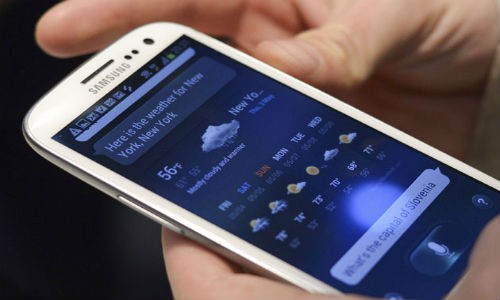
Amidst growing concerns on whether Samsung Galaxy Note 2 and Galaxy S3 will get the latest KitKat update or not, a report has surfaced online, suggesting that the South Korean company is keen to release the new OS firmware to its 2012 flagship phones probably by next month.
Technology blog Android Geeks has gotten hold of the list of Galaxy Note 2 and S3 variants, which are slated to the new KitKat update in May.
The list includes Samsung Galaxy Note 2 variants:
- GT-N7100 (international 3G model with Exynos Chipset) and GT-N7105 (International LTE model),
- GT-N7102 (China Unicom), GT-N7108 (China Mobile)
- SCH-I605(Verizon Wireless), SCH-R950 (US Cellular), SGH-i317(AT&T), Bell, Rogers, SaskTel and Telus SGH-i317M, T-Mobile SGH-T889, Mobilicity, Videotron and WIND SGH-T889V, SPH-L900(Sprint)
- SCH-N719 (China Telecom)
- SGH-N025 (NTT DoCoMo, Japan)
- SHV-E250K (KT), LG U+ SHV-E250L, and SHV-E250S (SK Telecom).
Samsung Galaxy S3 models include:
- GT-I9300 (international 3G model) & GT-I9305 (International LTE model),
- SHV-E210K, SHV-E210L and SHV-E210S (South Korea region specific model)
- SGH-T999/L and SGH-I747 (Canada and USA models)
- SGH-N064, SGH-N035 and SCH-J021 (Japanese network carrier specific models)
- SCH-R530, SCH-I535, SCH-S960L, SCH-S968C and SPH-L710 (USA carrier specific models)
- SCH-I939 (Chinese model)
The revelation comes close on the back of reports from technology blog Ruliweb, which claims that Samsung is certain to release updates to the company's 2012 marquee phones.
In February, Samsung USA had officially confirmed that Galaxy Note 2 and Galaxy S3 (2GB RAM model) would receive the latest Android OS update but details on the specific timeline of the release was never revealed.
So far Samsung has released KitKat update only to Galaxy Note 3, Galaxy S4, Galaxy Note 10.1 (2014 Edition) and Galaxy S4 Active (in USA) in almost all markets.
Other expected devices slated to taste the new chocolate-wafer flavored OS are Galaxy S4 Mini, S4 Zoom, Galaxy Note 2, Galaxy S3, S3 Mini, Galaxy Mega, Galaxy Light, and tablets such as Galaxy Note 8.0, Note 10.1 and Galaxy Tab 3.
Brief description of Android v4.4 KitKat OS update features:
Location Menu: This integrated location menu enables users easily activate GPS, Wi-Fi and mobile networks, while simultaneously keeping a tab on the battery consumption by the location service based apps.
Enhanced Google Mobile Service (GMS) apps: This application helps user to automatically back-up photos and video clips. He/she also can create, view, share rename Google Docs and files.
Improved Caller-ID: If a user receives a call from unknown number, the phone will look for matches on the net with local listings via Google Maps.
Priority Contacts: The new OS empowers the phone to automatically prioritize contact list for easy access, based on the frequency of the peoples' contacts to which users' talk.
Immersive display: To enhancethe entertainment factor, the new OS comes with immersive mode, where the status bar and navigation buttons disappear in to the back ground while you play music, games and read e-books. Users can just swipe the edge of the screen to bring backtheutility buttons.
Enhanced Message grouping: Google has brought in some improvements to the new Hangouts app; now, users can find all their text SMSs and MMSs, audio and video call details all at one place. He/She can also share location and send animated GIFs.
Emoji Characters: Initially users had to install third party app to use colorful characters in their SMS. Now, with KitKat update, the keypad comes pre-loaded with native Japanese Emoji emotion icons.
NFC and Wireless Printing: Google's new OS comes with a new Quickoffice app where-in people can create and store word documents in cloud storage as well as print files wirelessly on NFC-enabled HP printers.
Multi-tasking: with efficient memory management, users can multi-task by opening multiple applications; Listen to music while you can browse through the net.
Performance: Like all software updates, the new KitKat enhances smartphone's performance as well as efficient RAM management, leading to increase in battery.
(Ed: VP)








